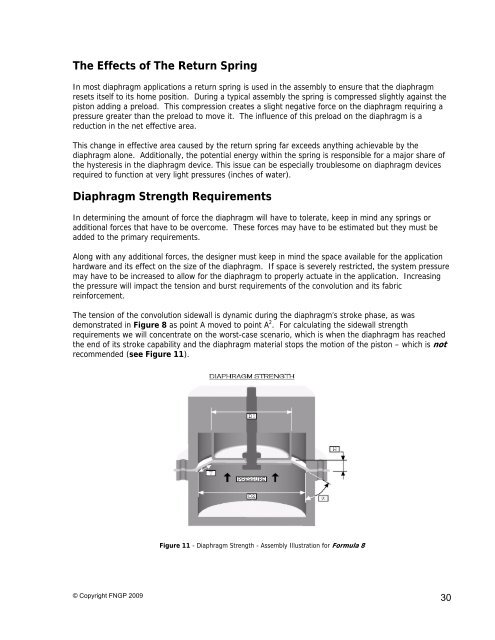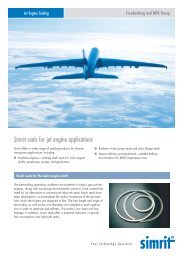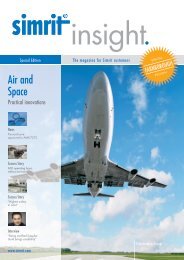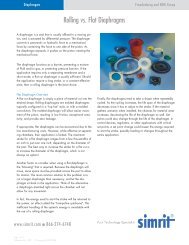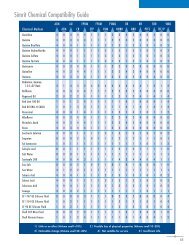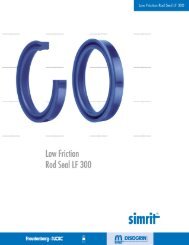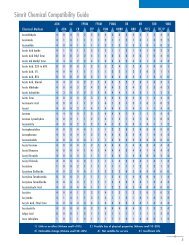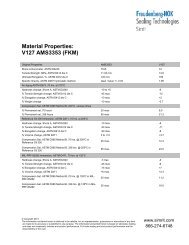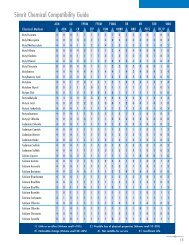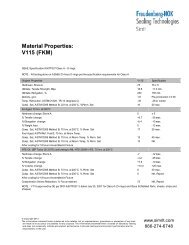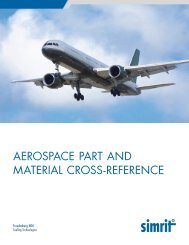Diaphragm Design Manual - Simrit
Diaphragm Design Manual - Simrit
Diaphragm Design Manual - Simrit
You also want an ePaper? Increase the reach of your titles
YUMPU automatically turns print PDFs into web optimized ePapers that Google loves.
The Effects of The Return SpringIn most diaphragm applications a return spring is used in the assembly to ensure that the diaphragmresets itself to its home position. During a typical assembly the spring is compressed slightly against thepiston adding a preload. This compression creates a slight negative force on the diaphragm requiring apressure greater than the preload to move it. The influence of this preload on the diaphragm is areduction in the net effective area.This change in effective area caused by the return spring far exceeds anything achievable by thediaphragm alone. Additionally, the potential energy within the spring is responsible for a major share ofthe hysteresis in the diaphragm device. This issue can be especially troublesome on diaphragm devicesrequired to function at very light pressures (inches of water).<strong>Diaphragm</strong> Strength RequirementsIn determining the amount of force the diaphragm will have to tolerate, keep in mind any springs oradditional forces that have to be overcome. These forces may have to be estimated but they must beadded to the primary requirements.Along with any additional forces, the designer must keep in mind the space available for the applicationhardware and its effect on the size of the diaphragm. If space is severely restricted, the system pressuremay have to be increased to allow for the diaphragm to properly actuate in the application. Increasingthe pressure will impact the tension and burst requirements of the convolution and its fabricreinforcement.The tension of the convolution sidewall is dynamic during the diaphragm’s stroke phase, as wasdemonstrated in Figure 8 as point A moved to point A 2 . For calculating the sidewall strengthrequirements we will concentrate on the worst-case scenario, which is when the diaphragm has reachedthe end of its stroke capability and the diaphragm material stops the motion of the piston – which is notrecommended (see Figure 11).Figure 11 - <strong>Diaphragm</strong> Strength - Assembly Illustration for Formula 8© Copyright FNGP 200930


